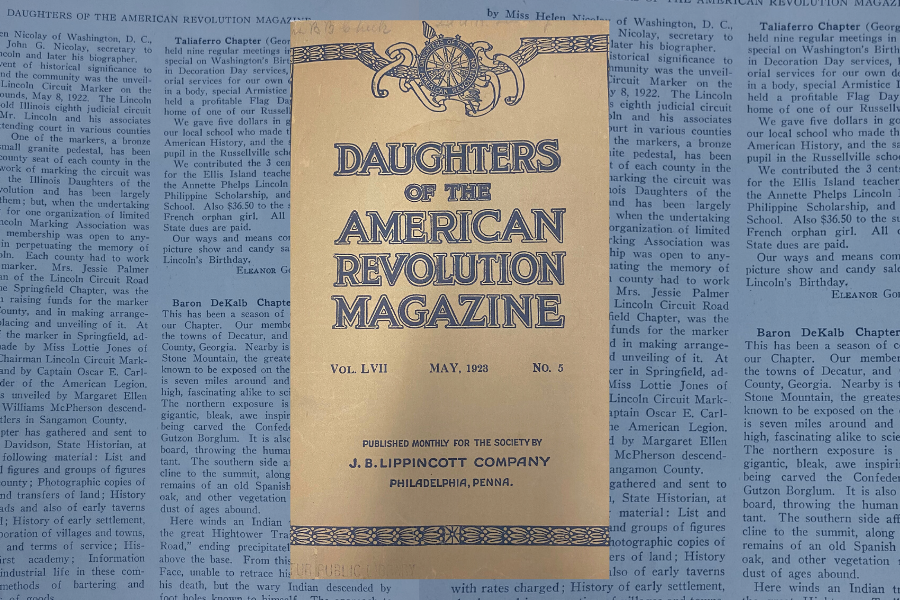Decatur’s Long Time, Leafy Residents – Trees of Decatur
Decatur has many historic trees. Celebrate spring by venturing out on a scavenger hunt in search of some of Decatur’s long time residents.
__________
This article was found in the archives, in our Environment, Trees subject file. We don’t know the exact year it was written, most likely in the late 1970s, but thought it would be fun to reprint for our readers as a scavenger hunt. We realize that some of the geography, architecture, or topography may have changed since this was written. Happy hunting and Happy Spring!
DeKalb Historical Society volunteers have made a study of some of Decatur’s long time “residents” who truly have their “roots” in the city- its trees. For Decatur is a city of trees, especially when viewed from the top of any of the new multi-storied downtown buildings. Builders today are doing much to save and add trees. With the help of tree lovers Ruby Zumbrook and Deborah Gaudier, of the Historical Society, and Newton Hogg, of the DeKalb Extension Service, information on both historic and unusual trees has been compiled. This list will be an excellent guide for a walking tour for Vacation Bible Schools, Scouts, Day Care Centers, or out-of-town visitors.
HISTORIC TREES:
(1) The big Oak surrounded by a retaining wall on the grounds of the Callaway Building on Trinity Place (opposite the new courthouse) has shaded many a church picnic in its day. It was saved when the new county building was built. It is an enduring landmark from the old Antioch AME Methodist Church, which played a significant role in the early life of Decatur. The church was organized in 1868 and met in a home. The first one-room structure was built six years later. The church grew to the extent that members would have to have tickets to get a place at the communion table or a seat in the building. (A history of this church is in the library of the DeKalb Historical Society.)
(2) The giant Magnolias in front of the Decatur Recreation Center, Sycamore Street, may well date back to the first residents of the 1830 home which occupied that block before the Center. Known as the Murphey-Scott-Cooper home, it was long a showplace with a collection of exotic plants and trees from around the world.
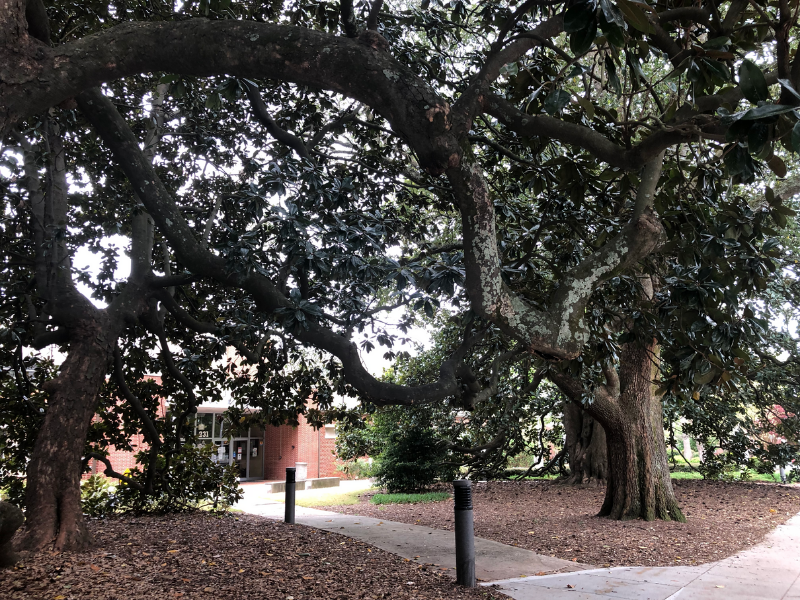
Magnolia trees located in front of the Decatur Recreation Center.
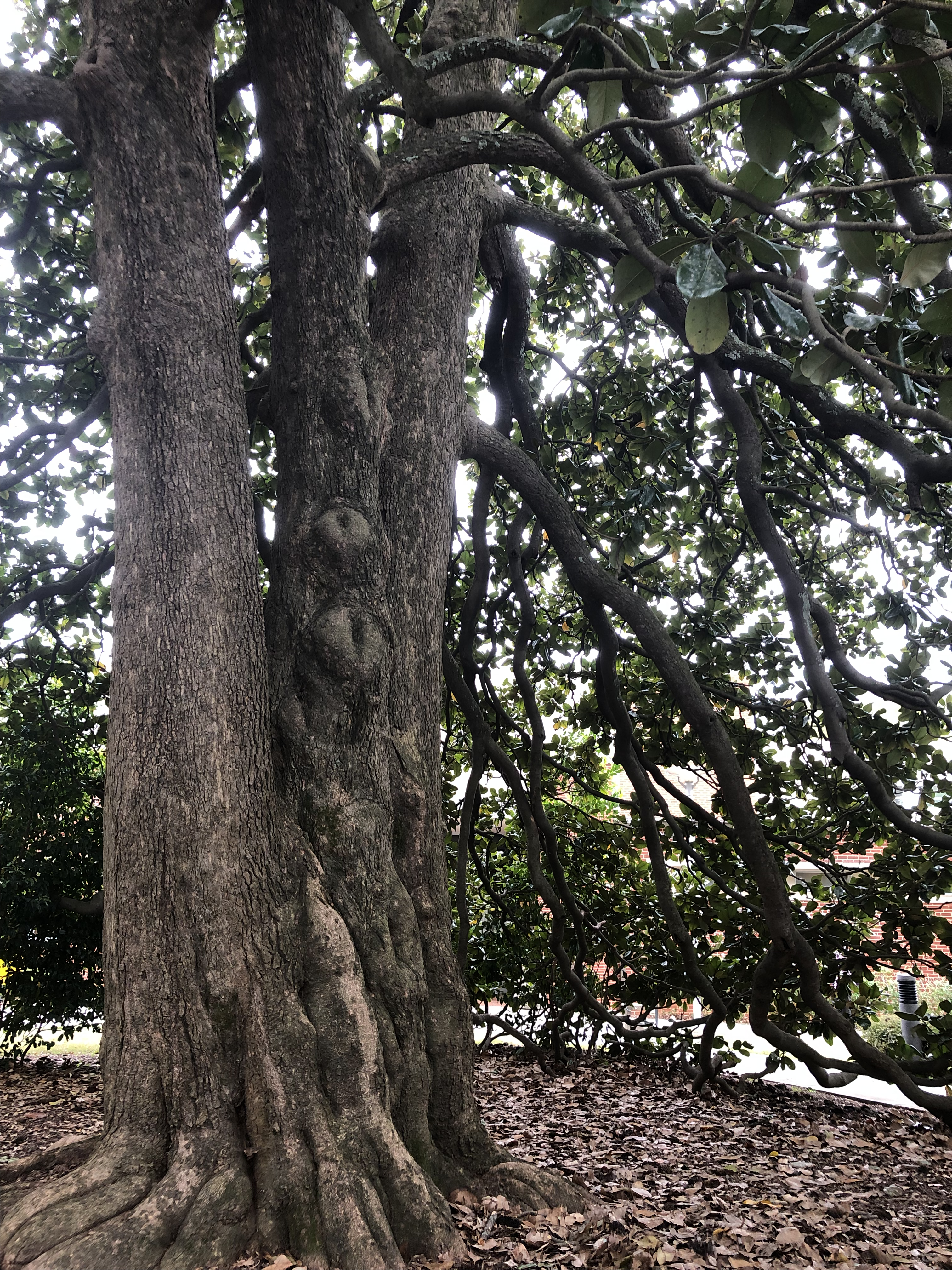
(3) On the north Candler Road corner of this plot is the Horse Chestnut, with fragrant cream-colored blossoms. It is the same species that lines the streets in Paris.
(4) The two Maples on adjoining lawns of the Swanton and Mary Gay Houses in the DeKalb Historic Complex on Trinity Place are gifts of MARTA, planted when the original Swanton maples were cut down. Benjamin Swanton brought the seeds for the first trees from Maine, wrapped in a pocket handkerchief, when he emigrated to Georgia with the gold rush of 1829.
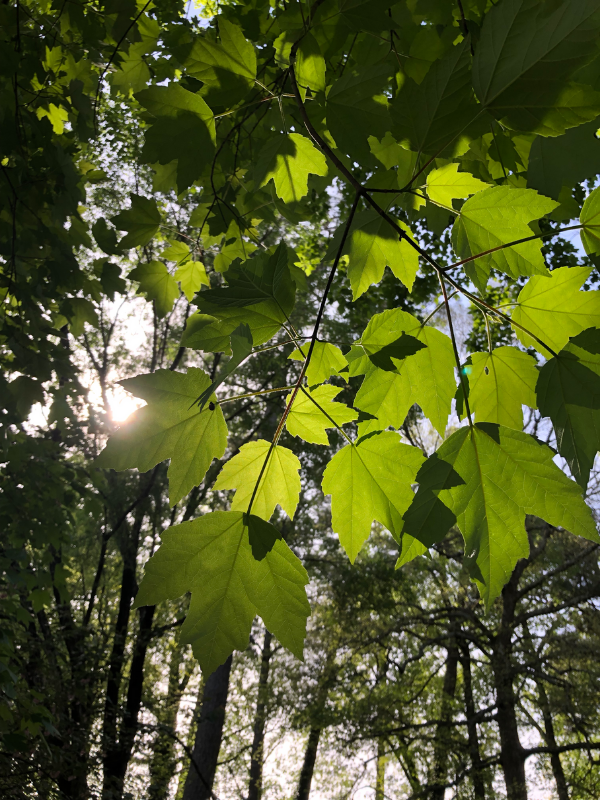
Leaves from a Maple located near the Swanton House.
(5) A large Water Oak, 150 years old, on the parking lot of the Old Depot was spared because of the intervention of the Historical Society. The venerable oak was about to be taken down for fear branches would fall and damage parked cars. An inspection by the state forestry department gave it a clean bill of health and it was saved.
(6) Another handsome tree saved by human compassion is the Black Walnut with the sidewalk built around it on Sycamore Street in front of the First Presbyterian Church.
(7) The Bradford Pears (with masses of spring blossoms) made recent history when Church Street was widened in the vicinity of Glenlake Pool. Four of the full-grown trees were moved to the Agnes Scott College campus. Not only have they survived Georgia’s driest summer ever, but three of them have also survived a second move for building changes on campus. They are located near Rebekah Hall. Enter the first drive way from South McDonough Street south of College Avenue.
(8) The huge Elm at the First Atlanta Bank building on East Ponce de Leon Ave. stood its ground. It was saved by terms of the property sale.
(9) Elms and other trees on the lawn of the Old Courthouse were spared when citizens brought an injunction on their behalf.

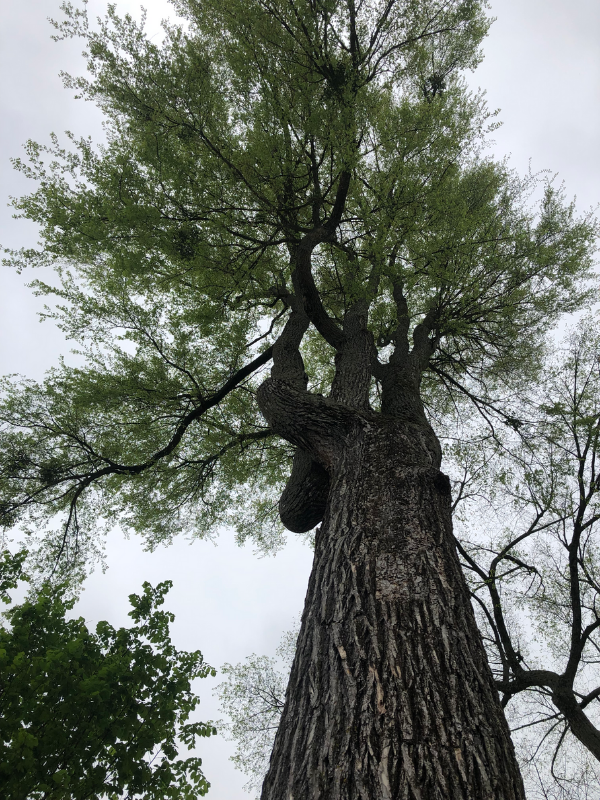
Elms and other trees located on the lawn of the Decatur Square.
(10) A very large Dogwood on the Agnes Scott campus necessitated the redesigning of the music building and was dubbed “The $60,000 tree.”

A Dogwood tree located near the Presser/Campbell parking lot on the campus of Agnes Scott College.
(11) The big Water Oak near the Decatur High School library is a living memorial to the late E.E. Treadwell who organized the first public school in Decatur in 1902. He said when grading was done for the old South building he noticed a small sprig of a tree had been spared. He put sticks around it and it continued to grow. He said he always thought of it as “my tree.”
UNUSUAL TREES:
(1) The American Hornbeam on the lawn of the Old Courthouse is a “Georgia Champion Tree.” In 1977, the Georgia Forestry Commission issued a certificate so naming it as the largest species in the state. It spreads over much of the northwest lawn. An ironwood, it is a member of the birch family. It is sometimes called the “muscle tree” because of the rippled effect of the bark. Its very hard wood was used by the pioneers to make ox yokes.
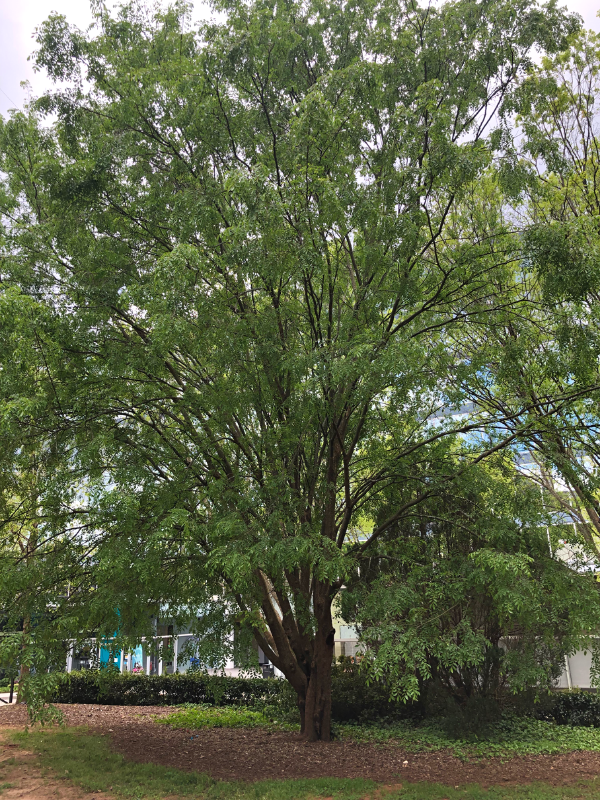
The “Champion” American Hornbeam rooted on the lawn of the Historic DeKalb Courthouse.

The trunk of the American Hornbeam, also known as the Eastern Hophornbeam.
(2) A Dawn Redwood is the cone shaped evergreen at the corner of the Decatur City Hall on Trinity Place. There are five others at the First Atlanta Bank building on Ponce de Leon Avenue.
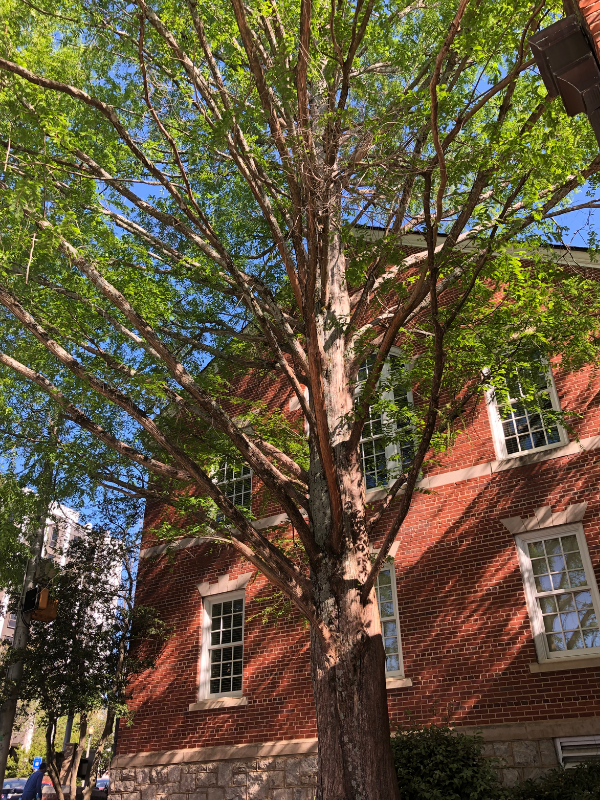
Dawn Redwood located next to Decatur City Hall.
(3) The Incense Cedar on the Candler Street bank of the Agnes Scott College campus is a native of Oregon, California, and Nevada.
(4) Florida Palms at the end of Ponce de Leon Court, off Ponce de Leon near Glennwood School, are rare this far north as are the Live Oaks on the Agnes Scott campus.
(5) The Ginkgo Tree, a native of China, is becoming increasingly popular for its distinctive bright yellow fall color. There is a marked one on the west lawn of the Old Courthouse and others in front of DeKalb Federal on Clairmont Avenue. This species is reputed to be 15 million years old and is referred to as a living fossil, as it is one of few surviving plants from prehistoric times.

Ginkgo tree also located on the lawn of the Historic DeKalb Courthouse.
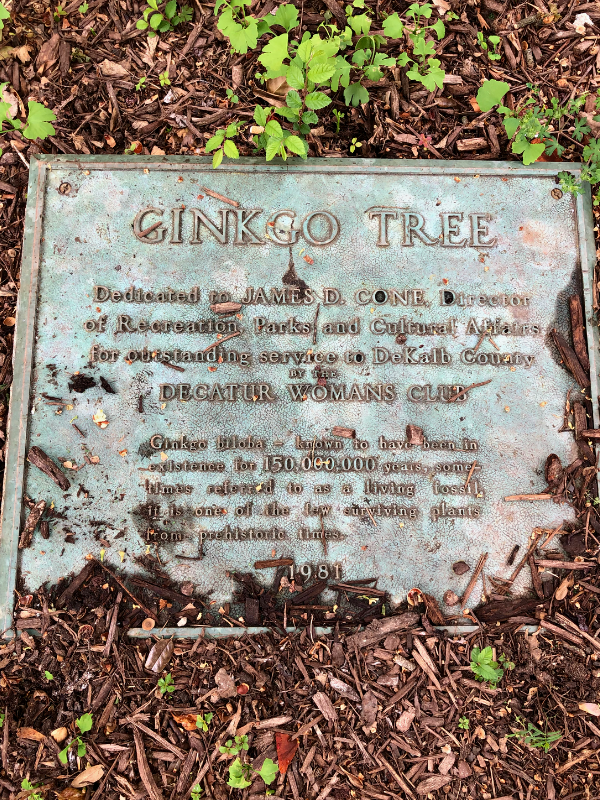
Plaque accompanying the Ginkgo tree reads, “Dedicated to JAMES D. CONE, Director of Recreation, Parks and Cultural Affairs for outstanding service to DeKalb County by the DECATUR WOMANS CLUB
Ginkgo biloba – known to have been in existence for 150,000,000 years, sometimes referred to as a living fossil, it is one of the few surviving plants from prehistoric times. 1981″
(6) The American Holly trees on the east lawn of the Old Courthouse are unusually large and full of red Christmas berries in season. This is a horticultural variety.
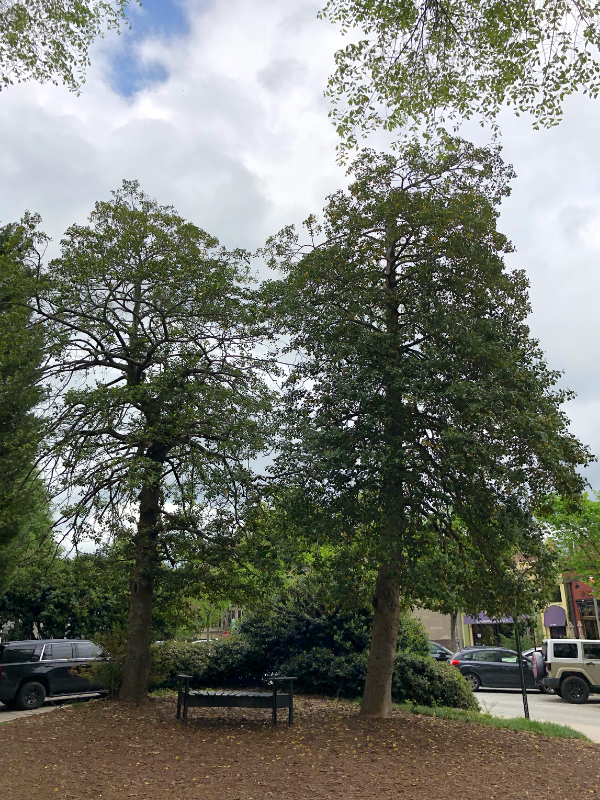
American Holly trees located on East Court Square.
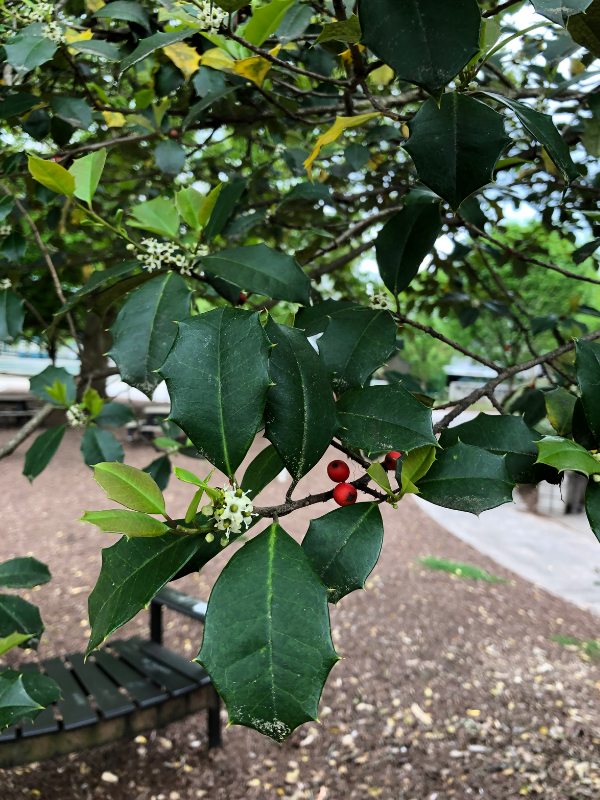
In spring, you can find American Holly trees equipped with small, white flowers as well as their signature red berries.
(7) The extraordinarily beautiful Black Gum shading the two restored log cabins in the DeKalb Historical Society Complex in Adair Park turns many colors in the fall. Visitors say when the western sun hits it, “it’s just like stained glass!”
To top it all, this proves Decatur does love its trees! When Dan Patillo’s One Decatur Town Square Building went up, they planted eight Willow Oaks, only to find they couldn’t be planted so close to a state highway. But an exception was made and the trees spared.
MORE from the archives…

Credits
Introduction written by Jennifer Blomqvist, Archivist & Volunteer Coordinator.
Photos and captions compiled by Rebecca Selem, Exhibits & Communications Coordinator.
Identifications were made possible thanks to the National Audobon Society Field Guide to North American Trees. We are not tree experts so if you see any errors, please let us know by emailing selem@dekalbhistory.org.






